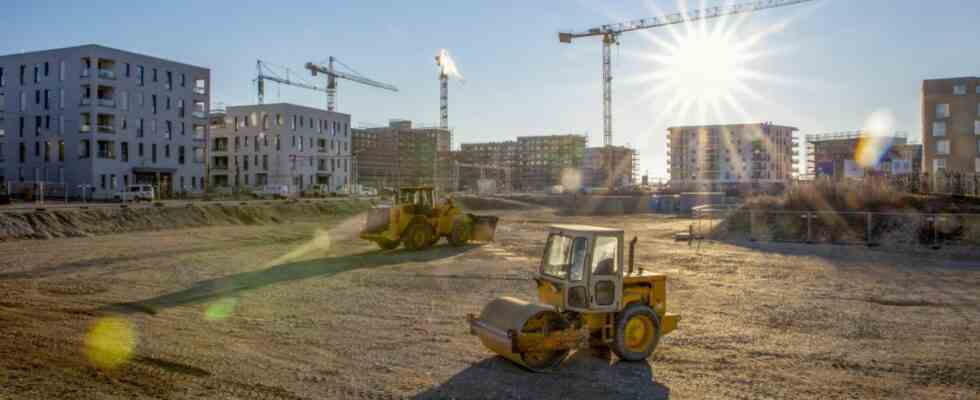When Matthias Lerm looks into German cities, he sees sins upon sins. “A lot of what is regulated in the construction industry still stems from the reconstruction period,” he says. From times when the main thing was to quickly create a lot of living space. “Today we are realizing what has been neglected” – climate protection, for example, or the adaptation of entire cities to higher temperatures and more extreme weather. It often takes 30 years before such mistakes are noticed.
Lerm heads the city planning office of Magdeburg, and he is also one of two chairmen of the “Sustainable Building Commission” at the Federal Environment Agency. And on Monday in Berlin, she presented a study intended to clear up the sins of the post-war period. German cities and German houses should be built differently, better. They should cope better with the consequences of climate change – and at the same time contribute less to global warming. The way is long, the time is short.
30 to 40 percent of all climate-damaging emissions are caused by buildings, be it through the heating energy or the energy consumption that gobbles up their construction. The rubble that is produced during construction and demolition alone accounts for around half of the German waste volume. 54 hectares of land fall victim to the construction of houses and roads – every day. These are often areas that were previously used for agriculture. So far, Germany has failed to meet all of the targets intended to curb land use, mostly quietly. “Without the focus on buildings, sustainable development and climate protection will not succeed,” says Dirk Messner, President of the Federal Environment Agency. A paradigm shift is needed.
Messner and Lerm are not alone, this Monday they are sitting together on the podium of a press conference, with the two responsible ministers: Clara Geywitz from the SPD, the building minister. And Steffi Lemke, the Green Environment Minister. Both Messner and Lerm believe that this constellation alone is a huge step forward. However, how noticeable this progress will be in German cities remains to be seen. Because the two ministers are reluctant to make specific demands.
“We will need other cities for the climate crisis”
Geywitz, who above all wants to create a lot of living space quickly, calls for a “culture of conversion” that also means that more existing buildings are renovated. She believes that in the future, construction must be “as climate-friendly as possible”. Building nothing at all won’t help either. Lemke, on the other hand, warns of the consequences if nothing changes: “We will need other cities for the climate crisis than those that are heating up faster and faster with concrete and asphalt.” With all planning, it is now a matter of first and foremost taking care of the inner development of the cities and only then of the “external development”, for example in the form of new development areas. “We’re tackling the task together,” says Lemke, looking at the colleague from the construction department. “It’s no coincidence that we’re sitting here together.”
However, that is also true in other respects, because the FDP is not included. It was only two weeks ago that the coalition partner called for a “construction booster for Germany”. The Liberals’ plans also aim to densify the cities, for example using existing wasteland in municipalities or adding floors to buildings. But the FDP no longer wants to know much about previous climate specifications for buildings: “The energy standards in new buildings have exceeded the profitability threshold,” says the booster paper. The coalition has set itself the task of raising these standards, and the associated building energy law is currently being revised. The coalition still has a few debates to do with climate-friendly living.
However, the experts from the Federal Environment Agency and the Sustainability Commission have far more in mind than just energy-efficient houses. Authorities head Messner fanned out a whole “sustainability hexagon” with six dimensions from low-emission building materials to the quality of life in the districts. The study also proposes a “primary building materials tax”: it should make fresh building materials so expensive that recycled material becomes more competitive. But the construction minister hastened to iron out the proposal because of the high construction costs. And the Green Minister of the Environment doesn’t want to know anything about such a tax either. The study, says Lemke, is “an important contribution to the social discourse”. Revolutions in urban planning certainly sound different.

